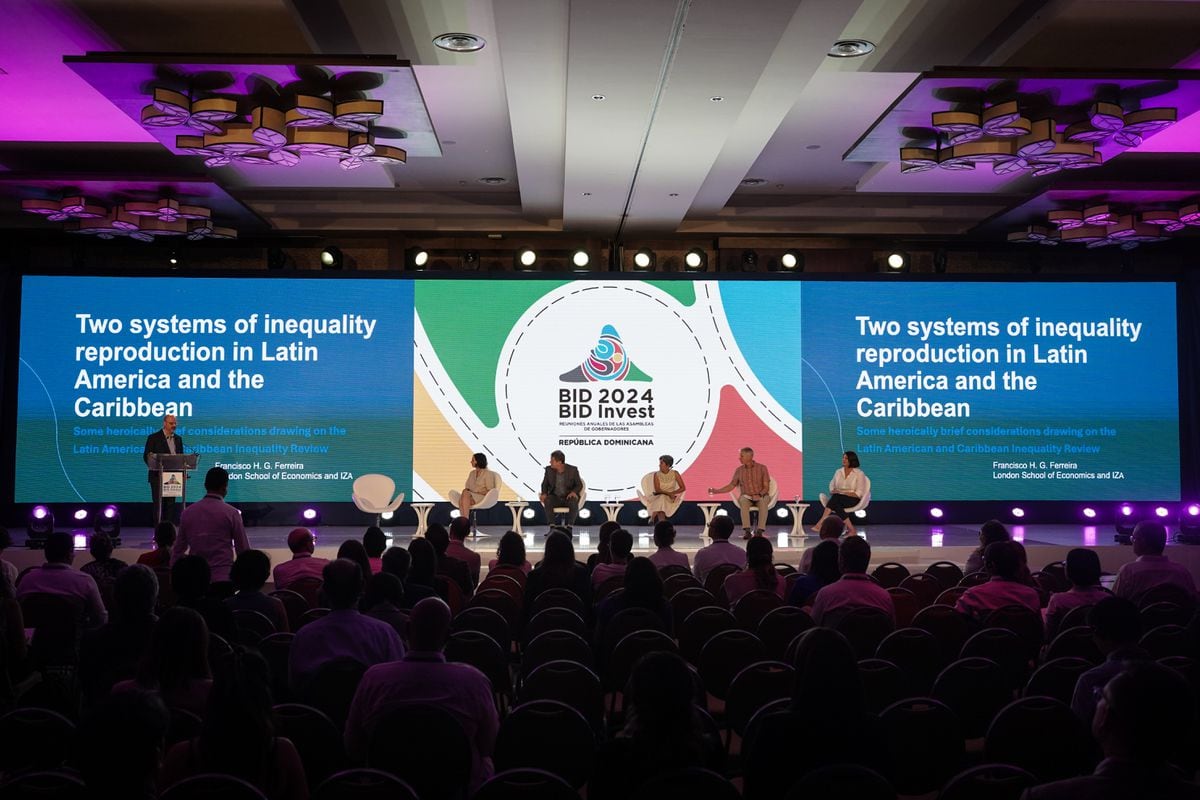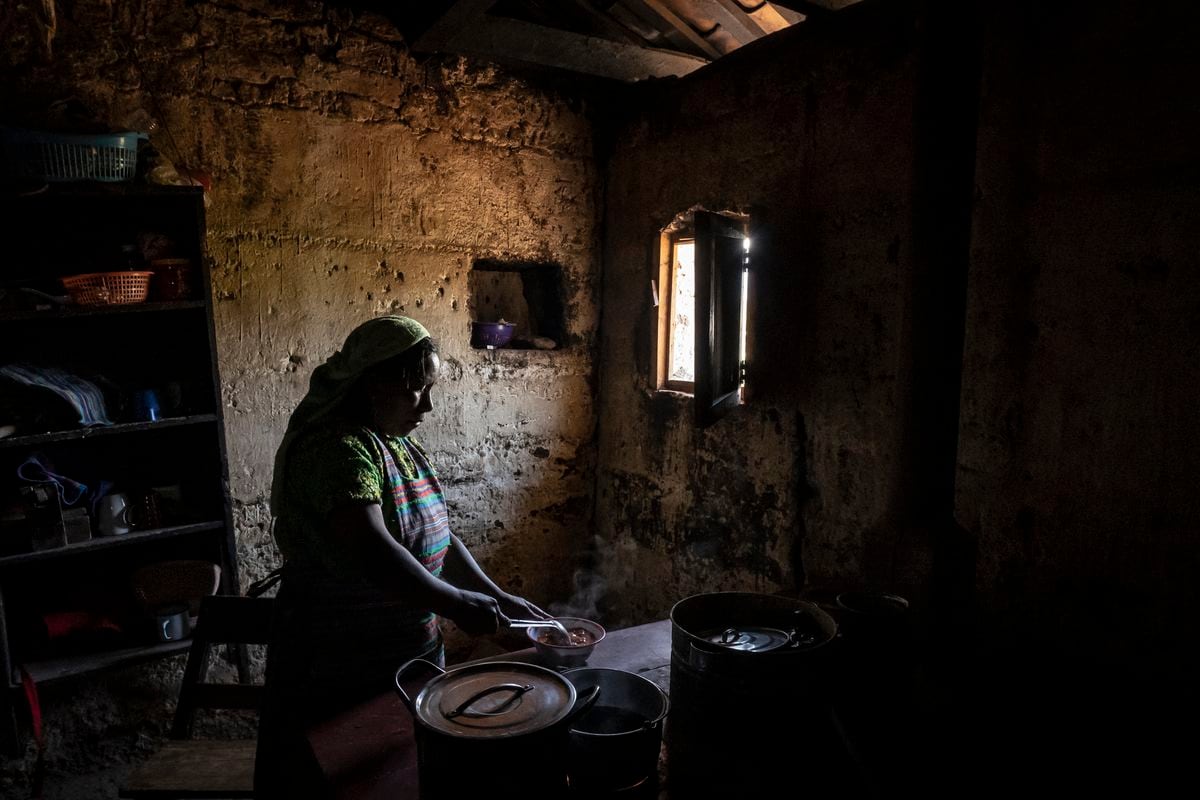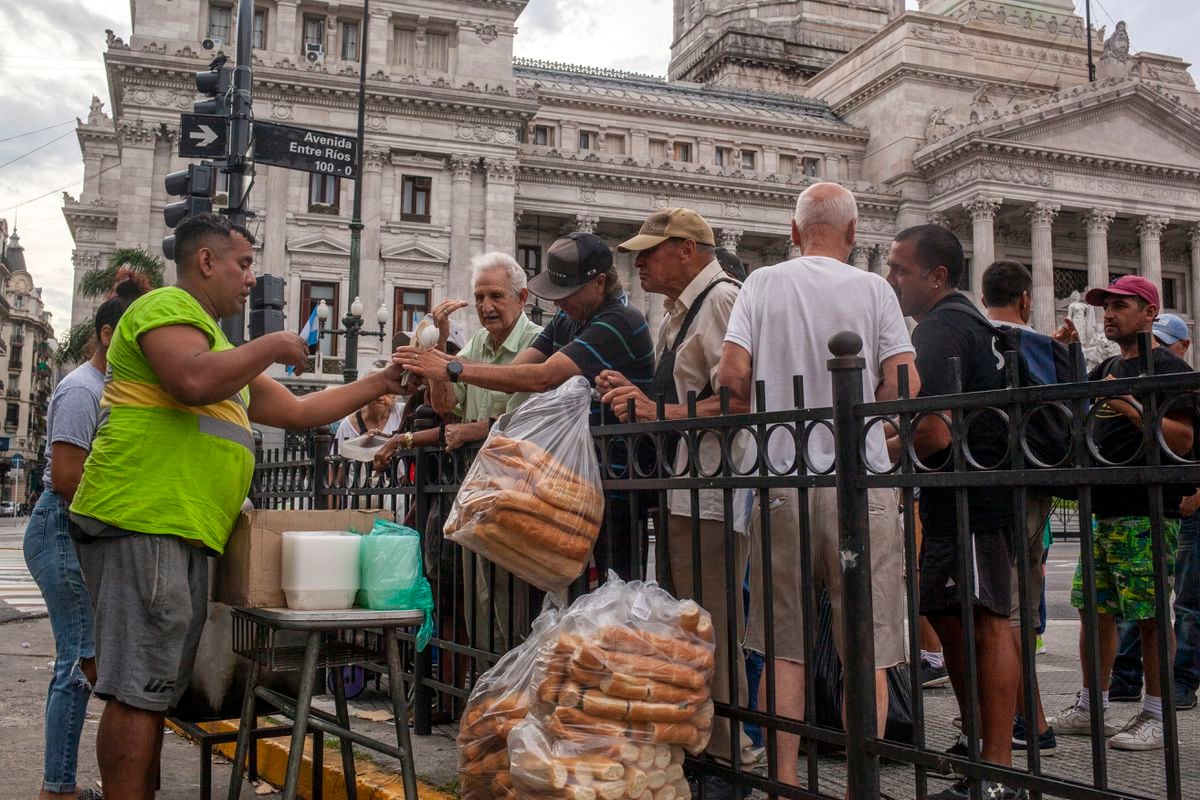A group of Salvadorans participate in a demonstration against the implementation of bitcoin as the official currency in El Salvador.MARVIN RECINOS (AFP)
The average gross domestic product (GDP) of the countries that comprise the Latin American region increased by 5.9% this year, according to the United Nations Economic Commission for Latin America and the Caribbean (ECLAC).
Next year, growth will moderate and grow by about 3%, in a year in which the largest economies and the most important trading partners, the United States and China, lose momentum.
With some exceptions, Latin Americans suffer from the loss of their purchasing power, since, due to global causes, such as disruptions in supply chains, and due to the countries' own causes, the prices of goods and services rose.
The year was also marked by political events that had an impact on financial markets, as well as by capital rounds that gave wings to new companies in the region.
These are some key figures to review 2021 in Latin America:
9.25%.
Brazil's monetary policy rate
The Central Bank of Brazil increased the monetary policy rate more than any other country this year, reaching 9.25%. The interest rate, which is used as a reference in financial transactions from mortgage loans to business loans, is a tool to contain inflation. A high rate inhibits an excessive circulation of money. Latin America's largest economy closed November with annual inflation of 10.74%, the highest since 2003. Mexico and Chile, among others, also raised their interest rates this year and analysts expect the hikes to continue until the inflation moderates. The highest interest rate is Argentina, a country that suffers from 51.2% inflation. However, the central bank in that country did not raise the rate this year.
$ 14.8 billion.
The financing raised by
startups
in the region
According to a study by the analytics firm CBInsights, 2021 marked an investment record in Latin American companies valued as “unicorns,” that is, those that raised more than $ 1 billion in financing.
Brazil was the main beneficiary with 16 unicorns.
Mexico follows with seven.
The total financing raised in rounds of
startup
companies
It was $ 14.8 billion, according to CBInsights.
In Chile, NotCo (also known as The Not Company) was valued at $ 1.5 billion, with funders such as Jeff Bezos, Formula 1 driver Lewis Hamilton and tennis player Roger Federer.
Their proposal is plant-based products that taste like animal products, such as milk, hamburgers and mayonnaise, which they design and produce using artificial intelligence.
eleven%.
The depreciation of the Peruvian sol versus the dollar
The election of Peruvian President Pedro Castillo, who came to power in alliance with a radical left party, generated a strong reaction in international markets, bringing the exchange rate of the national currency to its biggest drop in seven years.
Although the sol recovered some of the ground lost in recent weeks, its annual depreciation, until December 24, is 11% against the US dollar.
The exchange rate also fluctuated strongly due to announcements and changes in the Cabinet in his government, which experienced a series of crises since taking office.
Fears from foreign investors included not only possible left-wing policies, such as the expropriation of mineral resources, but also the lack of clarity in Peru's economic policy.
000,000.
The zeros removed from the Venezuelan currency
In the third reconversion under Chavismo in Venezuela, the authorities eliminated six zeros from the bolivar this year, and called it the
digital bolivar.
.
With this change, considered by analysts as "cosmetic", the Government of Nicolás Maduro seeks to contain hyperinflation, which has exacerbated the economic and humanitarian crisis that the oil country is going through.
However, the decision that has most impacted the purchasing power of Venezuelans has been the de facto dollarization that the Government allowed in 2019, which today makes up 70% of transactions in the country.
According to economists and the Central Bank of Venezuela itself announced last week, the country will reach in the first quarter of 2022 more than 12 months with monthly inflation below 50%, which would technically indicate its exit from hyperinflation.
320%.
The relationship between public debt and taxes in Latin America
To measure the financial capacity of countries to pay public debt, economists use this indicator: the ratio of debt and taxes.
According to the Organization for Economic Cooperation and Development (OECD), the figure for the region has been increasing since 2007, when it was at 223%, to its most recent estimate of 320%.
Latin America is the most indebted developing region in the world and monetary policy decisions in developed countries, together with an imminent economic slowdown in 2022, have leaders concerned about their ability to invest in their populations and in projects that promote development.
$ 30 billion.
Annual financial loss from mental health disorders
With forced confinements, loss of income and paralysis in education, the rise in mental disorders among children and young people has become a painful topic of conversation. This year, Unicef, together with the London School of Economics, carried out a study that measures how much the economies of Latin America and the Caribbean lose each year due to mental health disorders in young people. The result: $ 30.6 billion. "Inaction in mental health in Latin America and the Caribbean has had high costs for the well-being of children, in addition to the economies of the countries, especially as a consequence of covid-19," warned the report published in October. In its report, Unicef asks governments to "make an urgent investment in the mental health of children and adolescents",as well as to “break the silence that surrounds mental illness, addressing stigma and promoting a better understanding of mental health and taking seriously the experiences of children and young people”.
6.8%.
The rise in the price of Bitcoin since El Salvador made it a national currency
On September 7, El Salvador marked a milestone by making Bitcoin, the world's best-valued and most popular cryptocurrency, a national currency, on par with the US dollar.
Since that date and until December 24, the price of the coin has increased 6.8%.
Salvadorans received the coin with mixed reactions, while enthusiasts predict an increase in foreign investment from the decision, thousands took to the streets to protest against it.
For international observers, however, the risks outweigh the possible benefits, as the Central American country could become a center for laundering illicit money.
Subscribe here to the EL PAÍS América newsletter and receive all the informational keys of the current situation in the region

/cloudfront-eu-central-1.images.arcpublishing.com/prisa/NHOUNMXR4YWGWIP7OXNCDHRDJE.jpg)
/cloudfront-eu-central-1.images.arcpublishing.com/prisa/GZBJJXO3EZE2HLSP5ZRRKYYYOY.JPG)
/cloudfront-eu-central-1.images.arcpublishing.com/prisa/2C5HI6YHNFHDLJSBNWHOIAS2AE.jpeg)



/cloudfront-eu-central-1.images.arcpublishing.com/prisa/AWQDFA55JRFZ7EFY4XGGS3VAVQ.jpeg)
/cloudfront-eu-central-1.images.arcpublishing.com/prisa/Q6UJ4IEP6ZGLZLS3MSHF7LNYOU.jpg)
